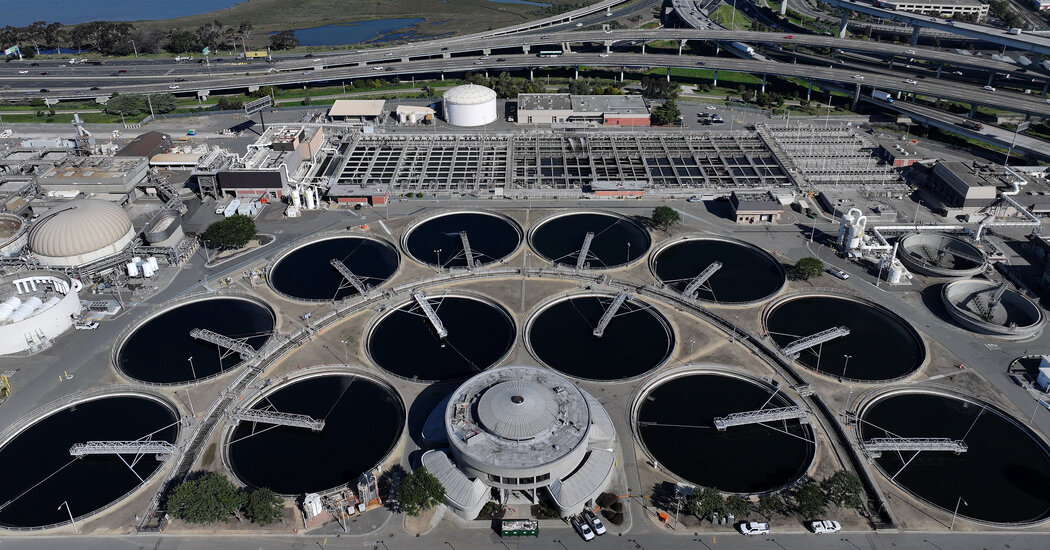Wastewater, even after treatment to make it drinkable, contains high levels of PFAS, according to researchers.
As the world grapples with climate change, population growth and dwindling supplies of fresh water, more people are set to rely on treated wastewater to sustain their daily lives.
But wastewater, even after treatment, contains high levels of harmful “forever chemicals” that are already contaminating the drinking water of millions of Americans, researchers said in a study published on Monday that analyzed wastewater samples nationwide.
The study, led by researchers at Harvard and New York University, found elevated levels of six types of chemicals known as PFAS, or per- and polyfluoroalkyl substances, in the samples. The chemicals, which have been linked to cancer and other diseases, are known as forever chemicals because they don’t break down in the environment. Last year, the Environmental Protection Agency started to regulate PFAS in drinking water.
The researchers found that the samples contained an even greater quantity of organofluorines, a wider group of chemicals that includes PFAS and is used in pharmaceuticals, refrigerants, and nonstick coatings. The majority of those chemicals are unregulated and the health consequences of exposure to many of them are still unknown.
“What are all of these other compounds? Are they other PFAS that we’re not measuring, that the industry has shifted toward?” said Bridger Ruyle, assistant professor of environmental engineering at New York University, who led the research. “What does that mean for exposure?”
The study, published in the Proceedings of the National Academy of Sciences, found that wastewater treatment facilities do not effectively remove these compounds from wastewater. At most sites, in fact, PFAS in wastewater became more concentrated after treatment, the researchers found.
The contamination is of particular concern, the researchers said, given that water scarcity across many regions of the United States means wastewater is being reused or is being released into rivers and lakes. And if that wastewater isn’t diluted enough before re-entering the drinking water supply, a concern that is growing as water flows dwindle because of overuse and climate change, “you have a contamination issue,” Professor Ruyle said.
About 50 percent of the country’s drinking water supplies are downstream of one or more wastewater sites, he added. The study used modeling to show that PFAS from wastewater was already contaminating the drinking water of up to 23 million people in the United States.
The results “emphasize the importance of further curbing ongoing PFAS sources,” the researchers concluded.
The new study highlights how widespread contamination is complicating efforts to reuse wastewater, which includes sewage from households as well as polluted water from businesses and factories. The sludge that is left over after wastewater treatment is also used to fertilize farmland across the country, and PFAS contamination of that sludge is also raising concerns over the practice.
